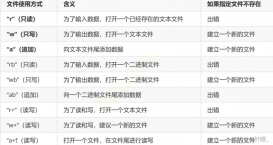1、 =default 和=delete 概述
任何事物的出現(xiàn)都必然有著其出現(xiàn)的理由,伴隨著每一個(gè)新的概念產(chǎn)生都會(huì)帶來一系列的便利和價(jià)值。C++在不斷的演變與發(fā)展,與此同時(shí),伴隨著許多新的特性和功能產(chǎn)生。=default、=delete 是C++11的新特性,分別為:顯式缺省(告知編譯器生成函數(shù)默認(rèn)的缺省版本)和顯式刪除(告知編譯器不生成函數(shù)默認(rèn)的缺省版本)。C++11中引進(jìn)這兩種新特性的目的是為了增強(qiáng)對(duì)“類默認(rèn)函數(shù)的控制”,從而讓程序員更加精準(zhǔn)地去控制默認(rèn)版本的函數(shù)。其具體的功能和使用方法下面將一一道來。
2、 類與默認(rèn)函數(shù)
在講解關(guān)鍵字 default和delete 之前,先對(duì)類和類的默認(rèn)函數(shù)作下描述與說明,從而加深對(duì)這兩個(gè)關(guān)鍵字的理解與認(rèn)知。既要知其然,也要知其所以然。C++中,當(dāng)我們?cè)O(shè)計(jì)與編寫一個(gè)類時(shí),若不顯著寫明,則類會(huì)默認(rèn)為我們提供如下幾個(gè)函數(shù):
(1)構(gòu)造函數(shù)
(2)析構(gòu)函數(shù)
(3)拷貝構(gòu)造函數(shù)
(4)拷貝賦值函數(shù)(operator=)
(5)移動(dòng)構(gòu)造函數(shù)
以及全局的默認(rèn)操作符函數(shù):
(1)operator,
(2)operator &
(3)operator &&
(4)operator *
(5)operator->
(6)operator->*
(7)operator new
(8)operator delete
注:若我們?cè)陬愔袑?shí)現(xiàn)了這些版本之后,編譯器便不會(huì)生成其對(duì)應(yīng)的默認(rèn)函數(shù)版本,這時(shí)需要我們顯式的寫上其對(duì)應(yīng)的默認(rèn)函數(shù)版本。
如例1所示:
|
1
2
3
4
5
6
7
8
9
10
11
12
13
14
15
16
17
18
19
20
21
22
23
24
25
26
27
28
29
30
31
32
33
34
35
36
37
|
/************************************************************************* * File Name: Student.cpp * Author: The answer * Function: Other * Mail: [email protected] * Created Time: 2018年07月17日 星期二 23時(shí)08分20秒 ************************************************************************/#include<iostream>using namespace std;class Student{public: Student(const int a,const int b) :m_a(a) ,m_b(b) { }int getA()const{return m_a;}int getB()const{return m_b;}private:int m_a;int m_b;};int main(int argc,char **argv){Student stu(1,2);cout<<stu.getA()<<endl; //1cout<<stu.getB()<<endl; //2 Student stu1; //編譯失敗,報(bào)錯(cuò): no matching function for call to ‘Student::Student()'return 0;} |
編譯方式:g++ Student.cpp
編譯報(bào)錯(cuò),提示:Student.cpp: In function ‘int main(int, char**)':
Student.cpp:34:13: error: no matching function for call to ‘Student::Student()'
Student stu1;
例1定義了一個(gè)對(duì)象stu1,該對(duì)象將會(huì)使用Student類的無參構(gòu)造函數(shù),而該默認(rèn)構(gòu)造函數(shù)在Student類中,我們沒有顯式的說明。因此,c++編譯器在我們提供了該函數(shù)實(shí)現(xiàn)之后是不會(huì)生成與之對(duì)應(yīng)的默認(rèn)函數(shù)版本的。在Student中我們重載了帶2個(gè)參數(shù)的構(gòu)造函數(shù),但是無參的構(gòu)造函數(shù),沒有提供,因此會(huì)報(bào)錯(cuò)。
解決方式是:在該類中顯式的提供無參構(gòu)造函數(shù),如下:
|
1
2
3
4
5
6
7
8
9
10
11
12
13
14
15
16
17
18
19
20
21
22
23
24
25
26
27
28
29
30
31
32
33
34
35
36
37
|
/************************************************************************* * File Name: Student.cpp * Author: The answer * Function: Other * Mail: [email protected] * Created Time: 2018年07月17日 星期二 23時(shí)08分20秒 ************************************************************************/#include<iostream>using namespace std;class Student{public: Student(){} //顯式說明Student的無參構(gòu)造函數(shù) Student(const int a,const int b) :m_a(a) ,m_b(b) { }int getA()const{return m_a;}int getB()const{return m_b;}private:int m_a;int m_b;};int main(int argc,char **argv){Student stu(1,2);cout<<stu.getA()<<endl; //1cout<<stu.getB()<<endl; //2 Student stu1;return 0;} |
問題:以 Student(){} 這樣的方式來聲明無參數(shù)構(gòu)造函數(shù),會(huì)帶來一個(gè)問題,就是使得 其不再是 POD 類型,因此可能讓編譯器失去對(duì)這樣的數(shù)據(jù)類型的優(yōu)化功能。這是我們不希望看到的。因此最好使用 = default來修飾默認(rèn)構(gòu)造函數(shù)。
|
1
2
3
4
5
6
7
8
9
10
11
12
13
14
15
16
17
18
19
20
21
22
23
24
25
26
27
28
29
30
31
32
33
34
35
36
37
38
39
40
|
/************************************************************************* * File Name: Student.cpp * Author: The answer * Function: Other * Mail: [email protected] * Created Time: 2018年07月17日 星期二 23時(shí)08分20秒 ************************************************************************/#include<iostream>using namespace std;class Student{public: Student() = default; Student(const int a,const int b) :m_a(a) ,m_b(b) { }int getA()const{return m_a;}int getB()const{return m_b;}private:int m_a;int m_b;};int main(int argc,char **argv){Student stu(1,2);cout<<stu.getA()<<endl; //1cout<<stu.getB()<<endl; //2 Student stu1;//使用is_pod模板類可以查看某類型是否屬于POD類型,若為POD類型,則返回1,反之,返回0std::cout<<is_pod<Student>::value<<std::endl; //1return 0;} |
更多關(guān)于is_pod的用法請(qǐng)參考: std::is_pod 。
3、 使用“=delete”來限制函數(shù)生成
C++開發(fā)中,我們經(jīng)常需要控制某些函數(shù)的生成。在C++11之前,我們經(jīng)常的普遍做法是將其聲明為類的 private 成員函數(shù),這樣若在類外這些這些函數(shù)的操作時(shí)候,編譯器便會(huì)報(bào)錯(cuò),從而達(dá)到效果。如例2:
|
1
2
3
4
5
6
7
8
9
10
11
12
13
14
15
16
17
18
19
20
21
22
23
24
25
26
27
28
29
30
31
32
33
34
35
36
37
38
39
40
41
42
43
44
45
46
47
48
49
50
|
/************************************************************************* * File Name: Student.cpp * Author: The answer * Function: Other * Mail: [email protected] * Created Time: 2018年07月17日 星期二 23時(shí)08分20秒 ************************************************************************/#include<iostream>using namespace std;class Student{public: Student() = default; Student(const int a,const int b) :m_a(a) ,m_b(b) { }int getA()const{return m_a;}int getB()const{return m_b;}private: Student(const Student& ); Student& operator =(const Student& );private:int m_a;int m_b;};int main(int argc,char **argv){Student stu(1,2);cout<<stu.getA()<<endl; //1cout<<stu.getB()<<endl; //2//Student stu1(stu);//報(bào)錯(cuò):Student.cpp:26:5: error: ‘Student::Student(const Student&)' is private//Student stu1(3,4);//stu1 = stu;//報(bào)錯(cuò):Student.cpp:27:14: error: ‘Student& Student::operator=(const Student&)' is privatestd::cout<<is_pod<Student>::value<<std::endl; //return 0;} |
例2代碼編譯報(bào)錯(cuò),因?yàn)樵陬愔校覀儗tudent的拷貝構(gòu)造函數(shù)和拷貝賦值函數(shù)都聲明為了 private 屬性,因此,當(dāng)在類外使用拷貝構(gòu)造和拷貝賦值操作值,編譯器會(huì)報(bào)錯(cuò)。雖然能夠達(dá)到效果,但是不夠直觀和簡潔。對(duì)于追求高效以及簡潔來說,這樣做有2個(gè)問題:
(1)不是最簡化;
(2)對(duì)于友元支持不友好.
更為簡潔直觀的方法是使用:=delete
|
1
2
3
4
5
6
7
8
9
10
11
12
13
14
15
16
17
18
19
20
21
22
23
24
25
26
27
28
29
30
31
32
33
34
35
36
37
38
39
40
41
42
43
44
45
46
47
48
49
|
/************************************************************************ * Author: The answer * Function: Other * Mail: [email protected] * Created Time: 2018年07月17日 星期二 23時(shí)08分20秒 ************************************************************************/#include<iostream>using namespace std;class Student{public: Student() = default; Student(const int a,const int b) :m_a(a) ,m_b(b) { }int getA()const{return m_a;}int getB()const{return m_b;} Student(const Student& ) = delete; Student& operator =(const Student& ) = delete;private:int m_a;int m_b;};int main(int argc,char **argv){Student stu(1,2);cout<<stu.getA()<<endl; //1cout<<stu.getB()<<endl; //2//Student stu1(stu);//報(bào)錯(cuò):Student.cpp:39:21: error: use of deleted function ‘Student::Student(const Student&)'//Student(const Student& );//Student stu1(3,4);//stu1 = stu;//報(bào)錯(cuò):SStudent.cpp:44:10: error: use of deleted function ‘Student& Student::operator=(const Student&)'std::cout<<is_pod<Student>::value<<std::endl; //return 0;} |
注:若缺省版本被刪除了,重載該函數(shù)是非法的.
4、 “=default”使用范圍
|
1
2
3
4
5
6
7
8
9
10
11
12
13
14
15
16
17
18
19
20
21
22
23
24
25
26
27
28
29
30
31
32
33
34
35
36
37
38
39
40
41
42
43
44
45
46
47
48
|
"=default"不僅僅局限于類的定義內(nèi),也可以用于類的定義外來修飾成員函數(shù),如例3:/************************************************************************* * File Name: Student.cpp * Author: The answer * Function: Other * Mail: [email protected] * Created Time: 2018年07月17日 星期二 23時(shí)08分20秒 ************************************************************************/#include<iostream>using namespace std;class Student{public: Student() = default; Student(const int a,const int b) :m_a(a) ,m_b(b) { }int getA()const{return m_a;}int getB()const{return m_b;} Student(const Student& ) = delete; Student& operator=(const Student& );private:int m_a;int m_b;}; Student& Student::operator =(const Student& ) = delete;int main(int argc,char **argv){Student stu(1,2);cout<<stu.getA()<<endl; //1cout<<stu.getB()<<endl; //2Student stu1(3,4); stu1 = stu;//編譯報(bào)錯(cuò):Student.cpp:42:10: error: use of deleted function ‘Student& Student::operator=(const Student&)'std::cout<<is_pod<Student>::value<<std::endl; //return 0;} |
到此這篇關(guān)于C++11新特性“=default”,“=delete”的使用的文章就介紹到這了,更多相關(guān)C++11 =default =delete內(nèi)容請(qǐng)搜索服務(wù)器之家以前的文章或繼續(xù)瀏覽下面的相關(guān)文章希望大家以后多多支持服務(wù)器之家!
原文鏈接:https://juejin.cn/post/6965388048372596743














